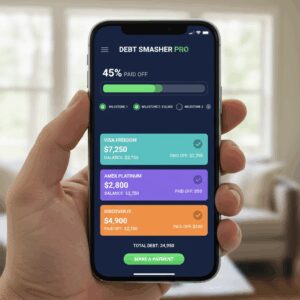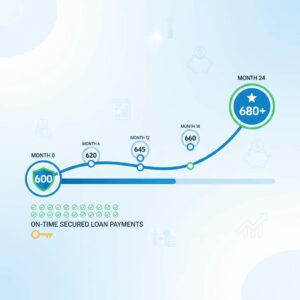The Psychology of Borrowing: Why We Say Yes to Loans We Don’t Need

For many people, taking out a loan feels like a necessity—covering medical bills, tuition, or an emergency expense. But sometimes we borrow for reasons that are far less urgent. Personal loans for vacations, cosmetic procedures, or big-ticket electronics are increasingly common, raising a question: why do we say yes to loans we don’t really need?
The answer lies in psychology. Behind the numbers and interest rates are powerful emotional triggers that drive borrowing behavior.
The Lure of Instant Gratification
Humans are wired to prefer immediate rewards over delayed ones. This is known as present bias. A dream vacation now feels more exciting than the idea of saving for it over a year. Lenders make it easier by offering fast approvals and instant transfers, shrinking the time between desire and action.
Marketing taps into this bias with phrases like “get it today” or “why wait?” The emotional appeal outweighs the logical downsides, such as accumulating debt or paying interest over time.
The Power of Framing
How a loan is presented can heavily influence decision-making. A $10,000 loan at 12% interest may sound intimidating. But reframe it as “just $187 a month” and suddenly it feels manageable.
This tactic—called framing effect—shifts focus from the total cost to smaller, digestible payments. Borrowers often underestimate how those “manageable” monthly payments add up over time.
Social Pressure and Status
Borrowing can also be tied to image. In a world shaped by social media, many people feel pressure to keep up appearances, whether it’s the latest phone, designer clothes, or a trendy trip abroad.
- Social proof: Seeing peers finance lifestyles through loans normalizes borrowing.
- Fear of missing out (FOMO): Limited-time offers and exclusive experiences push people to borrow so they don’t feel left behind.
Even if the purchase isn’t necessary, the desire to maintain status can override financial caution.
Optimism Bias
Many borrowers assume they’ll be able to pay off loans easily. Psychologists call this optimism bias—the tendency to believe our future circumstances will be better than today.
Someone might borrow for a luxury item assuming they’ll get a raise soon, or that next month’s budget will “look different.” If that optimism doesn’t pan out, the loan becomes a burden rather than a bridge.
The Role of Lenders
Of course, lenders know these psychological levers well. From zero-interest promotions to “pre-approved” offers, the industry designs products that make borrowing seem painless. Easy application processes, attractive visuals, and gamified experiences all reduce friction, nudging people to say yes even when they don’t strictly need the money.
Breaking the Cycle
So how can consumers protect themselves from unnecessary borrowing?
- Pause Before Accepting
Before signing, ask: Is this a want or a need? Waiting even 24 hours before deciding can help separate emotional impulses from logical choices. - Do the Math
Look at the total repayment cost, not just the monthly payment. A $5,000 loan could end up costing $6,500 after interest. - Set Savings Goals
If the purchase isn’t urgent, try saving instead. Building a sinking fund for vacations or upgrades provides the same reward without long-term debt. - Understand Your Triggers
Recognize when you’re borrowing to impress others or ease stress. Awareness can reduce the influence of social or emotional pressure.
Borrowing isn’t inherently bad. Used wisely, loans can open doors to education, business growth, or emergency relief. But when we borrow for non-essentials, it’s often because of psychological forces—instant gratification, social pressure, or optimism bias—that cloud our judgment.
By understanding why we say yes to unnecessary loans, consumers can make more intentional choices. Sometimes the best financial move isn’t another loan—it’s patience, planning, and resisting the emotional pull of “right now.”
Unlock Full Article
Watch a quick video to get instant access.









